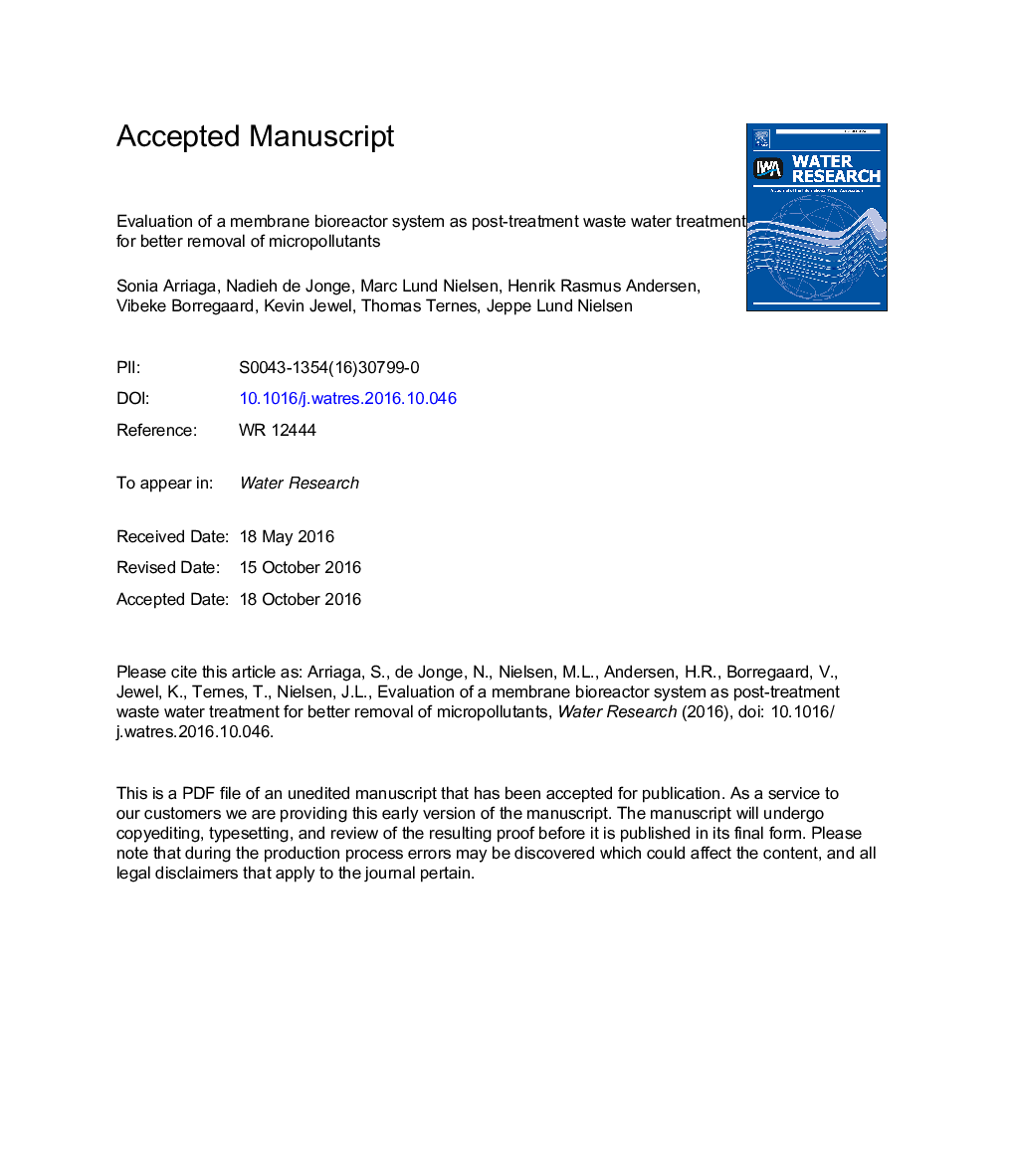| Article ID | Journal | Published Year | Pages | File Type |
|---|---|---|---|---|
| 5759200 | Water Research | 2016 | 37 Pages |
Abstract
Organic micropollutants (OMPs) such as pharmaceuticals are persistent pollutants that are only partially degraded in waste water treatment plants (WWTPs). In this study, a membrane bioreactor (MBR) system was used as a polishing step on a full-scale WWTP, and its ability to remove micropollutants was examined together with the development and stability of the microbial community. Two stages of operation were studied during a period of 9 months, one with (S1) and one without (S2) the addition of exogenous OMPs. Ibuprofen and naproxen had the highest degradation rates with values of 248 μg/gVSS·h and 71 μg/gVSS·h, whereas diclofenac was a more persistent OMP (7.28 μg/gVSS·h). Mineralization of 14C-labeled OMPs in batch kinetic experiments indicates that higher removal rates (â¼0.8 ng/mgTSS·h) with a short lag phase can be obtained when artificial addition of organic micropollutants was performed. Similar microbial populations dominated S1 and S2, despite the independent operations. Hydrogenophaga, Nitrospira, p55-a5, the actinobacterial Tetrasphaera, Propionicimonas, Fodinicola, and Candidatus Microthrix were the most abundant groups in the polishing MBR. Finally, potential microbial candidates for ibuprofen and naproxen degradation are proposed.
Keywords
Related Topics
Physical Sciences and Engineering
Earth and Planetary Sciences
Earth-Surface Processes
Authors
Sonia Arriaga, Nadieh de Jonge, Marc Lund Nielsen, Henrik Rasmus Andersen, Vibeke Borregaard, Kevin Jewel, Thomas A. Ternes, Jeppe Lund Nielsen,
